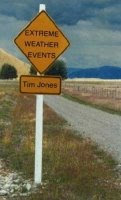The Pole: Preamble
This 500 word short-short story appeared in my first collection, Extreme Weather Events (2001). It reflects my continuing fascination with the events of December 1911 and January 1912, when the Norwegian expedition under Roald Amundsen and the British expedition under Robert Falcon Scott contended, with their different methods and different personalities, to be the first in recorded history to reach the South Pole. It’s an era and a competition about which there is still controversy.
I was raised on tales of the heroism of Scott and his other great rival, Ernest Shackleton – yet, in those tales, Amundsen was always regarded as an outsider and something of a bounder, a Johnny Foreigner using such underhand methods as meticulous preparation and detailed organisation to succeed where British pluck and improvisation failed.
“The Pole” is far from the first story to re-imagine the race for the Pole – one of its most distinguished predecessors is Ursula Le Guin’s short story Sur. I even have an idea for a “The Pole 2”, which, perhaps fortunately, I haven’t yet written. But here, in 500 words or so, is my version of the race for the Pole.
The Pole
Amundsen and Scott approached the Pole from opposite directions. They halted when they were each about ten feet from it. Their men, who had been following warily behind, joined their leaders, and two semi-circles of tired, hungry, dirty explorers glared at each other through the drifting snow.
There were protocols to be observed on such occasions. “Pony-butchers!” yelled Helmer Hanssen.
“Dog-killers!” replied Wilson. This wasn’t really fair; the English had killed their dogs, too, but the difference — an important difference to all right-thinking Englishmen — was that this had been the result of incompetence rather than design.
“Disorganised rabble!” True enough.
“Cheats!” This was the Englishmen’s greatest complaint. Everyone knew Scott had first dibs on the pole, yet this arrogant Norwegian had tried to beat him to it.
Insults go only so far. It may have been Evans who scooped up the first handful of icy snow; soon, the air was filled with missiles, little packets of misery bound for neck or chest or face. The activity released something in them; they danced and capered, bending and straightening, hurling challenges when they were not hurling snow, their ranks dissolving into a fluid ballet of man and ice.
But it was cold, utterly cold, and they were tired. Scott and Amundsen (who had kept themselves largely aloof from the frenzy infecting their men) looked at each other, brushed the snow from their clothes, then motioned for silence. Each leader walked forward, step for step, until their hands could clasp.
“Welcome to the Pole, Captain Scott.”
“Welcome to the Pole, Mr Amundsen.”
They shook hands again. Then they moved to one side and repeated the handshake for the cameras, and it is Bjaaland’s photograph we have seen so many times, the two leaders, hoods thrown back, smiling at each other, there at that desire of all true hearts, the Pole.
After the handshakes were over, after the exchange of gifts between the men, they returned to the Pole itself. Whoever had made the cairn that stood there had built well, but there was no clue to their identity, nor to how they had brought the rock from some distant outcrop. It took the best part of an hour to dismantle the cairn, bury its rocks a suitable distance away, and smooth over the snow.
When the site had been cleared, they stood two ski poles upright in the snow, lashed on the Norwegian flag and the Union Jack, and took a further round of photos. After the British had gorged themselves on the Norwegians’ food — for the British were half-starved, while the Norwegians had more than they needed — each party left the Pole behind, with many a final glance at the two flags fluttering bravely together in the wind, and began the long trek home.

